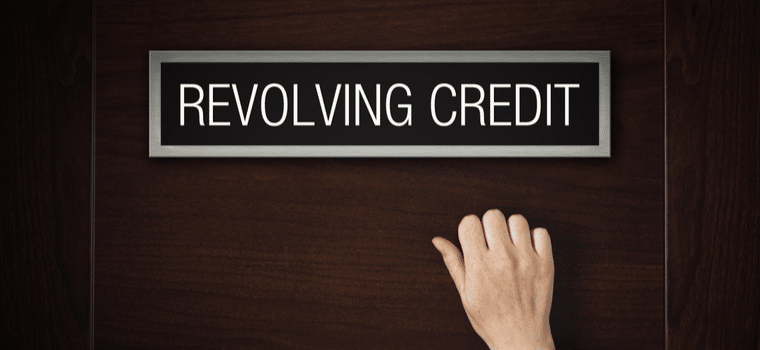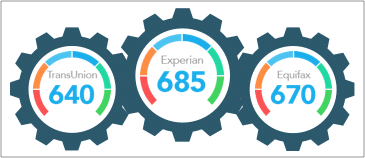Revolving credit can be thought of as a loan with an approved credit limit that you can borrow from and pay back repeatedly. It allows for the flexibility of using credit to pay for purchases over time instead of having to pay with cash up front. Credit cards are a well-known source of revolving credit, but they aren’t the only type available.
What is Revolving Credit?
Revolving credit allows you to make purchases or withdraw money from your credit line. As you access funds and the amount of your available credit decreases, the minimum payment due typically increases. Before using revolving credit, it can be helpful to understand a little more about it:
1. Payments and Interest
With this type of credit, you have the option of making the minimum payment due, paying off the entire balance or paying an amount in between the minimum and the total balance. If you choose to pay off the balance each month within the grace period, you can avoid paying interest.
However, choosing to carry a balance from month-to-month can result in interest charges accruing. Revolving credit often features a variable, instead of a fixed, interest rate, which means that the interest rate can increase.
2. Withdrawing Money
Some revolving accounts, such as credit cards, allow you to withdraw cash — also known as a cash advance — from the pre-approved credit line by using your card at an ATM or visiting a bank. Cash advances typically carry a higher interest rate than purchases, and one-time fees may also apply.
Other revolving credit accounts, such as a home equity line of credit, allow you to withdraw cash as needed via a bank-issued checkbook or credit/debit card. Interest charges typically apply but only to the amount you withdraw — not the entire line of credit.
3. Account Balance
A revolving credit account’s balance includes the total amount borrowed. Depending on the type of revolving credit account, the balance can include items such as purchases, annual fees, transaction fees, origination fees, interest and balance transfers.
Examples of Revolving Credit
Depending on what you need revolving credit for, one type may work better than another. Here’s an explanation of some of the different revolving credit options.
1. Credit Cards
Credit cards are one of the most common types of revolving credit. When you make charges on the card, you can choose between paying the minimum payment due, another amount or the entire balance.
2. Home Equity Line of Credit
A HELOC is a credit line that allows you to borrow against the equity in your home. Homeowners can borrow up to a set credit limit determined by the lender, and pay back the funds with interest. HELOCs have a draw period, when homeowners may access funds and a repayment period when no more money can be accessed and funds must be repaid.
3. Store Credit Cards
Store cards work much like a regular credit card. However, they can only be used at a particular store or group of stores associated with the card.
4. Bank Accounts With Overdraft Protection
Some banks offer overdraft protection for checking accounts that functions as a line of credit. Upon approval, the bank links the overdraft protection line of credit to your banking account to automatically cover any overdrafts.
You may also be able to access the funds as needed. Each month, the bank will draft the minimum payment due from your linked account. Because this is considered a loan, interest charges apply.
Not all Overdraft Protections function like this, so please check your Bank’s Overdraft Protection product features and payment terms.
5. Personal Line of Credit
With a personal line of credit, a lender pre-approves a borrower for a certain amount. In some cases, funds do not have to be accessed all at once. Instead, they can be accessed over time as needed and paid back in minimum payments.
Payments may be structured to begin right away, or they may feature draw and repayment periods, like a HELOC. Interest is due only on the amount of the credit line used, and an annual fee may apply.
Can Revolving Credit Negatively Impact Your Credit Score?
Revolving credit can negatively impact credit scores — in some instances more than others. Here are some examples:
- When you apply for an account, the credit card issuer typically pulls your credit, which can result in a hard inquiry. A hard inquiry may have a slight negative impact to a credit score.
- Adding a new account to the accounts already listed on a credit report can alter the average age of accounts, which also might negatively impact a score.
- Using too much of a revolving credit line can cause an increase in credit utilization ratio, which many consumer finance experts recommend keeping under 30%. To find out what your credit utilization ratio is, divide your credit card balance by your credit limit. You can calculate the credit utilization ratio for each card and for all cards collectively because both matter.
- Missing revolving credit payments can result in late payments being reported to your credit history.
Monitoring Your Credit
If you’re not already using a product that helps you monitor your credit, you might want to consider ScoreSense. ScoreSense not only provides users with all three credit reports and credit scores, it also issues daily alerts, as needed, and provides monthly updates regarding your credit. Are you ready to start monitoring your credit? Let us know in the comments.




